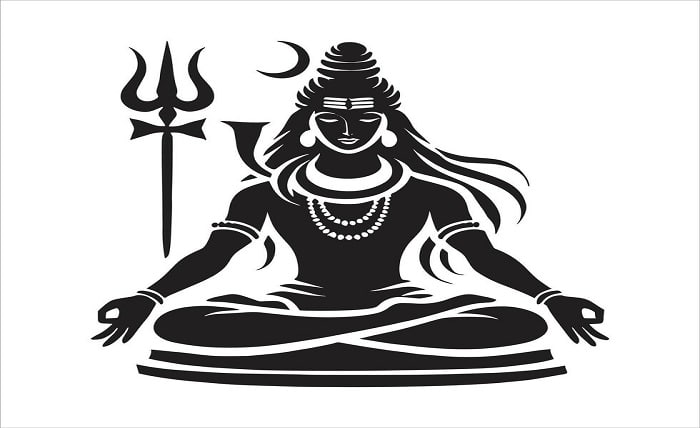Mahadev: The Supreme God in Hindu Mythology – Legends, Symbolism, and Devotion

In Hindu mythology, Mahadev is one of the principal deities, revered as the supreme god within the religion. Known as Shiva, Mahadev is often referred to as the “Destroyer” in the holy trinity of Brahma, Vishnu, and Shiva. While Mahadev is associated with destruction, it’s important to understand that in the Hindu philosophical context, destruction is not viewed negatively but as a necessary process for renewal and regeneration.
Mahadev is celebrated for his immense power, wisdom, and compassion. He embodies paradoxes — fierce yet benevolent, ascetic yet indulgent, and destructive yet protective. Understanding Mahadev means understanding the complex nature of the universe itself, where creation, preservation, and destruction are interconnected.
This post will take you on a journey through the many facets of Mahadev, exploring his divine attributes, stories, worship rituals, and his central role in the hearts and minds of millions of Hindus worldwide.
The Birth and Origin of Mahadev
Mahadev is said to have emerged from the cosmic ocean at the beginning of time, embodying the infinite, eternal, and ever-changing nature of the universe. According to Hindu mythology, the story of Mahadev’s birth varies in different texts, but all of them emphasize his supremacy and divine nature.
In the Shiva Purana, it is mentioned that Mahadev was born from the union of Vishnu and Brahma, thus making him an integral part of the trinity, or Trimurti. He was tasked with the responsibility of destruction, which is essential for the renewal of life and creation. Despite his association with destruction, Mahadev is also seen as the source of creation and the one who grants liberation to those who seek it.
Mahadev’s name comes from two Sanskrit words: “Mahā” meaning great and “Deva” meaning god. Together, Mahadev translates to “the great god,” and this name encapsulates his omnipotence, transcendence, and infinite nature.
The Iconography of Mahadev
When we think of Mahadev, several iconic images come to mind. From his celestial appearance on Mount Kailash to his role in epic mythological tales, his portrayal has always been striking and awe-inspiring. Mahadev is typically depicted with several key attributes that symbolize his multifaceted nature.
Mahadev’s Appearance
- Third Eye: One of the most iconic features of Mahadev is his third eye, which represents his infinite wisdom and ability to see beyond the physical world. It is said that when Mahadev’s third eye opens, it can unleash destruction, but it is also a source of deep insight into the nature of existence.
- Trident (Trishul): The trident, or Trishul, is another important symbol of Mahadev. It represents his dominion over creation, preservation, and destruction. The three prongs symbolize the three Gunas: Sattva (goodness), Rajas (activity), and Tamas (ignorance).
- Snake Around His Neck: Mahadev is often seen adorned with a snake, symbolizing his control over the natural and supernatural realms. The snake also represents the power of time and the cycles of life and death.
- Blue Throat: One of the most famous aspects of Mahadev’s physical form is his blue throat. This is a result of his act of consuming the poison during the churning of the ocean (Samudra Manthan) to protect the world from destruction.
- Mount Kailash: Mahadev is often associated with Mount Kailash, which is considered his celestial abode. It is a place of supreme peace and serenity, where Mahadev meditates in the company of his consort Parvati and his sons, Ganesha and Kartikeya.
- Matted Hair (Jata): The matted hair of Mahadev symbolizes his ascetic nature and connection to the universe. His hair is often depicted as flowing, with the river Ganga flowing from it, representing purity, nourishment, and divine blessings.
The Family of Mahadev: Parvati, Ganesha, and Kartikeya
The family of Mahadev holds great importance in Hindu mythology, and their stories form an integral part of his divine journey. Mahadev’s consort, Parvati, is the goddess of fertility, love, and devotion, and together they are considered the divine couple who symbolize the union of masculine and feminine energies.
Parvati: The Divine Consort
Parvati is often considered the embodiment of Shakti, or divine feminine energy. As Mahadev’s consort, she is the balance to his asceticism, bringing compassion, love, and warmth into his often solitary existence. The relationship between Mahadev and Parvati is not only one of love but also a profound spiritual connection. Together, they represent the ultimate balance in the universe.
Ganesha: The Remover of Obstacles
Ganesha, the elephant-headed god, is the son of Mahadev and Parvati. Known as the remover of obstacles, Ganesha is worshipped at the beginning of any auspicious occasion, prayer, or venture in Hindu culture. His role is symbolic of the idea that challenges and barriers in life are not insurmountable, and with the right mindset, they can be overcome.
Kartikeya: The God of War
Kartikeya, the second son of Mahadev and Parvati, is known as the god of war. He is often depicted riding a peacock and wielding a spear, and he is considered the protector of the divine and the vanquisher of demons. Kartikeya represents bravery, valor, and the triumph of good over evil.
Mahadev and the Sacred Dance: Nataraja
One of the most profound aspects of Mahadev is his role as the Nataraja, the Lord of Dance. The Nataraja form of Mahadev is symbolic of the eternal cycle of creation, preservation, and destruction. In this form, Mahadev is depicted dancing in a cosmic rhythm, with flames encircling him, symbolizing the destruction of the universe that will eventually lead to its recreation.
The dance of Mahadev, also known as the Ananda Tandava, is a representation of the dynamic energy of the cosmos. It signifies the flow of time and the cyclical nature of the universe, reminding us that everything in the universe is subject to change and transformation.
Worship and Devotion to Mahadev
Worshipping Mahadev is an important part of Hindu spirituality, and devotees around the world engage in various rituals to honor him. The most prominent of these rituals is the Shivaratri, an annual night dedicated to fasting, chanting, and meditating in honor of Mahadev. Devotees believe that on this night, Mahadev is especially receptive to the prayers and devotion of his followers.
Other common practices include the offering of bel leaves, milk, honey, and water to the Shiva Lingam, a sacred symbol of Mahadev. Many temples are dedicated to Mahadev, and his followers often visit these temples to seek blessings and guidance.
Mahadev’s Mantras
The chanting of Mahadev‘s mantras is another popular form of worship. The Om Namah Shivaya mantra is the most widely recognized and chanted mantra associated with Mahadev. It is a powerful invocation of his divine energy and is believed to bring peace, protection, and spiritual growth to those who chant it with sincerity.
The Symbolism of Mahadev in Hindu Philosophy
Mahadev‘s role in Hindu philosophy is not limited to destruction; he also symbolizes the process of transformation and renewal. In a philosophical context, Mahadev represents the need for destruction in the cyclical process of life. Destruction is not seen as an end but as the necessary step for regeneration and evolution.
The symbolism of Mahadev also extends to the concept of moksha, or liberation. As the one who both destroys and regenerates, Mahadev is seen as the god who facilitates the soul’s journey toward liberation by helping transcend the cycle of birth and death.
The Global Influence of Mahadev
Mahadev‘s influence extends far beyond India. With the spread of Hinduism to different parts of the world, his worship has reached various corners of the globe. His devotees can be found in countries like Nepal, Sri Lanka, Bangladesh, the United States, the United Kingdom, and many others. His representation as a god who embodies both asceticism and worldly attachment resonates with people across cultures and philosophies.
Conclusion
Mahadev is much more than a deity in Hindu mythology. He is a symbol of the eternal, the infinite, and the cyclical nature of life. His influence on Hindu philosophy, his role as an all-encompassing god, and his embodiment of both destruction and creation make him one of the most important figures in Hinduism.
The worship of Mahadev transcends rituals and practices; it is a way of life, a means of understanding the universe, and a path to self-realization. His teachings of balance, surrender, and transformation continue to inspire millions worldwide, and his divine energy remains a guiding force in the lives of his followers.
FAQs
1. Who is Mahadev in Hindu mythology?
Mahadev, also known as Shiva, is one of the principal deities in Hinduism. He is the god of destruction and transformation, part of the holy trinity of Brahma, Vishnu, and Shiva.
2. What is the significance of Mahadev’s third eye?
Mahadev’s third eye symbolizes his wisdom and ability to perceive beyond the physical world. It represents the destruction of ignorance and the ability to see the truth.
3. Why is Mahadev associated with Mount Kailash?
Mount Kailash is believed to be the abode of Mahadev. It is considered a sacred place of peace and meditation, where Mahadev resides in solitude with his consort Parvati and sons Ganesha and Kartikeya.
4. What are the symbols associated with Mahadev?
Mahadev is commonly depicted with a trident (Trishul), a snake around his neck, matted hair, and a blue throat, among other symbols. Each of these represents different aspects of his divine nature.
5. What is Shivaratri, and why is it important?
Shivaratri is an annual Hindu festival dedicated to Mahadev, marked by fasting, chanting, and prayers. Devotees believe that on this night, Mahadev is especially receptive to their devotion.




